I figured I'd show some photos of the front suspension pieces fitted to the Buick along with some various engine compartment shots. My idea for front suspension was to swap out the OEM a-arms for a set of tubular aftermarket models. There are plenty of different shapes and sizes of a-arms out there. Some are really good. Some (as you can well imagine) are really bad. The ones I chose are from AutoFab Race Cars. I really liked them because not only were they (extremely) well built, they were built from 4130 steel (chrome moly) and were nicely TIG welded (which is pretty much mandatory with 4130). Another big bonus was the fact they used large rod ends on all four (per side) mounting points. I should also point out that in stock form, there is quite a bit of camber change when the suspension on these cars goes through its travel (similar to the antics of something like an earlier GM A-body). Much of that camber change is fixed with the geometry of the AutoFab a-arms. Here's a photo of the a-arms as delivered from AutoFab.

I decided to make a few mods to the a-arms. Like the rest of the car, I swapped the supplied rod ends for high strength 4130 jobs from Aurora (they're almost $60….each…Yikes!). Another question I had was this: The uppers came with nicely machined aluminum cross shafts. On a racecar, you don't concern yourself with potholes and other road irregularities. On a car that sees street use, obviously you do. “What if?” entered my mind, so much so I called a pal who is a mechanical engineer and asked him. Although he figured the loads might not be that brutal in this location, he thought it would be safer on a street car to use a steel cross shaft. As a result, I had steel cross shafts machined to replace the standard aluminum models AutoFab supplies. Finally, while the hammer tone powder coating AutoFab uses is of an excellent quality, I didn't really dig the color. So I stripped the a-arms and had them powder coated black. You can see the upper here, installed in the car. In this photo, you can also see the fabbed brake hard lines. I installed armor on the lines anywhere the lines would be vulnerable (actually I used an entire roll of stainless armor for the car).

This photo of the left front shows the upper and part of the lower a-arm. The big bolt that goes through the top of the upper is a suspension travel limiter. Basically, it's a suspension stop bolt used to adjust and limit the amount of movement the front suspension has. The limiters can be backed right off for street use or you can "tie the car down" so that the front has little travel on a super sticky racing surface. I powder coated the spindles and the brake calipers. The flex hoses are from Russell while the frame bracket for the hose is stock, but cad plated silver. Wheel studs are long models and the dust shields are new old stock from GM (ok…I smashed the originals with a pickle fork….twice…oops). Springs are stock Buick V6. You can see some of the fabricated brake line in this photo. I spent a huge (Huge) amount of time on the suspension and chassis for this car. I always thought that details really made the difference in any car. I hope it shows up well in the photos (particularly since it likely doesn't seem like much when you first look at the Buick).

The steering box is a new piece from Borgensen. These folks are wonderful to deal with by the way. Everything I've ever worked with from them has been top notch. And service is great too. Someone sent me the wrong pitman arm, and when I asked about it, it didn't take very long for another correct model to be in my hands (next day Fed Ex if my memory serves me correctly). I chose a slow ratio box. There were two reasons for this: It makes parking easier with manual steering and on a fast car, a quick ratio box is, uhm, rather delicate from a "darting" perspective <g>. I know someone who used to habitually jerk the steering wheel on the gear change on a 427 4-speed Fairlane. It came back and bit him (the result was a guard rail encounter – not pretty)!

Here are a few photos of the master cylinder and brake lines. The master is a Lamb Components modified Mopar unit. This is a darling of the dragstrip. It's light. It's reliable and it's easily adapted to other cars. The only catch is the fitting size (goofy by goofier). Roger Lamb works that out in his modified units. They supply fittings that go to -3 AN. The adapter to the firewall is a billet piece from TRZ Race Cars. What you can't see is a Lamb pushrod retainer captured in the back of the master. It ensures that the pushrod cannot back out (I've had one come out on a Pro Stock style car I had – luckily if fell out while servicing the car in the shop – I've been nervous about this stuff ever since). The actual pushod (which you can't see) has a spherical bearing that attaches to the brake pedal. The geometry of the stock pedal that is used with Buick’s infamous (notorious?) "Power Master" booster arrangement is correct for a manual conversion. All I had to do was have the pin removed (replaced by a high strength AN bolt). These photos also show more of the plumbing. If you recall, I said this was a real pain? I wasn't kidding. I’ll bet there's two weeks of my time plumbing the thing (brakes – fuel was another matter entirely). I know for sure that it took 30 feet of certified (origin) stainless steel tubing to get the job done.



Here's why you don’t use stainless without knowing the source. I bought a thirty-foot roll of stainless brake line tubing from a speedshop. The price was right. Now I know why. I threw away every piece I flared. Thinking my high quality flaring tool was junk; I tried flaring some small pieces of certified origin tubing I had left over from an earlier racecar-plumbing job. Bingo. It worked perfectly. After doing a bit of homework, I came to the conclusion that the speedshop tubing was most likely sourced from China. Nice. And the name on the packaging was from a name brand brake component supplier.

This is a good look at the uber-cool aluminum radiator Ron Davis built for me. It's the largest rad that can fit in the stock G-Body rad cradle. I had to cut and trim the upper mount to clear the thing (after that was done, I had the top mount powder coated). The rad is huge. Davis' handiwork is over the top too. Beautiful welds. The built-in shroud is tightly sealed as well. The fans are the largest Spal jobs that will fit (Davis provided those with the radiator). You can't see it, but ahead of the rad, mounted on a hand whittled aluminum bracket is a B&M stacked plate transmission cooler. It's fitted with -6 AN ports. It’s a nice piece (and so far, they're made in Canada…but I see a lot of the Hurst and B&M hardware is moving offshore. Yuck).

Here's the anodized aluminum heater block off plate along with an aftermarket cowl piece (when you remove the ac box on these cars, there is no cowl panel remaining). I had it engraved with the Buick logo (the guy who built the plate engraved it). It's pretty cool I think. The round piece with four fasteners in it (top of the delete plate) is a firewall feed through for the coil. The coil takes up residence inside the glove box.

Right now I'm working on finishing the instrument panel. I have a custom GNX style cluster I'm putting together. Down the road I'll include some interior shots and maybe a photo or two of the trunk. I made some neat doubler plates to hold the fuel pump and one of the filters in place, and they show up inside the trunk. Also I have some photos (somewhere on my computer) of the Mark Williams pieces inside the rear end. After all of my years involved in drag racing, I'm convinced Williams builds the nicest rear end pieces in the business. I’ll show 'em to you down the road.
Take care!
Wayne Scraba
and again...
